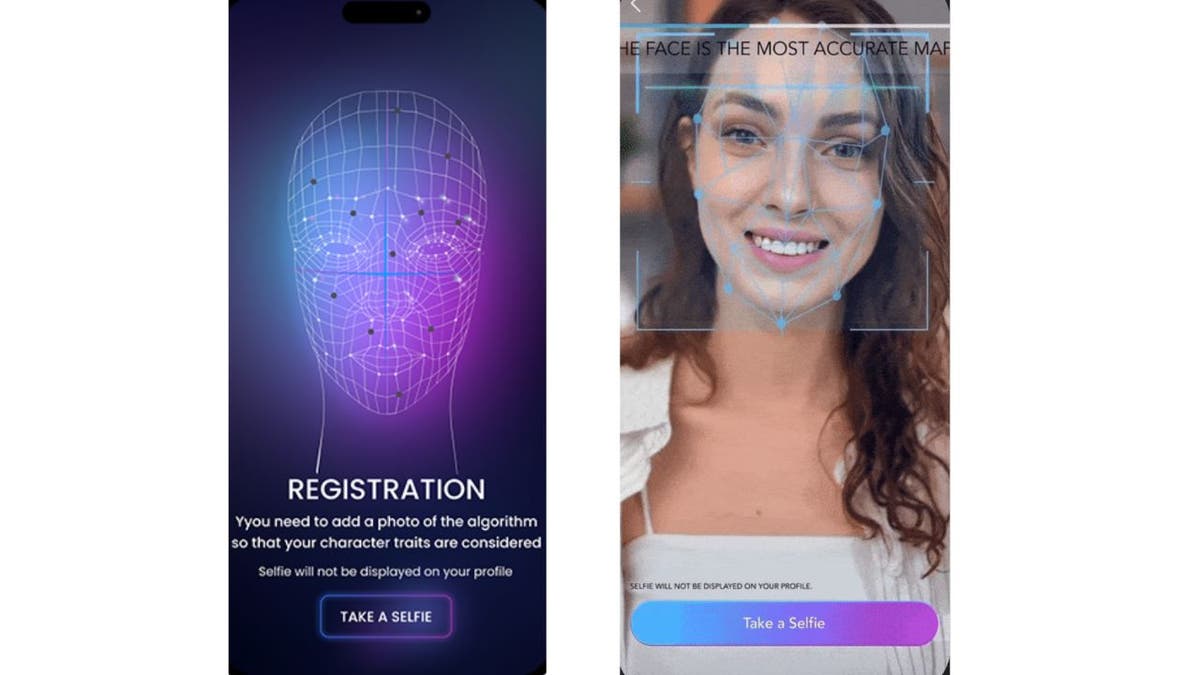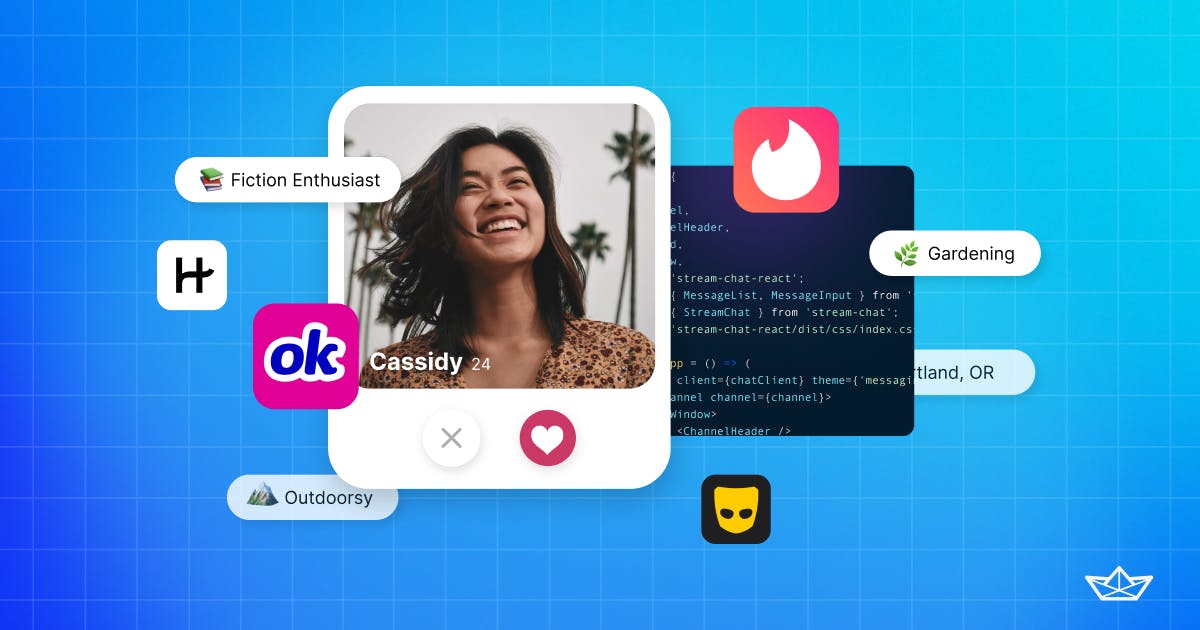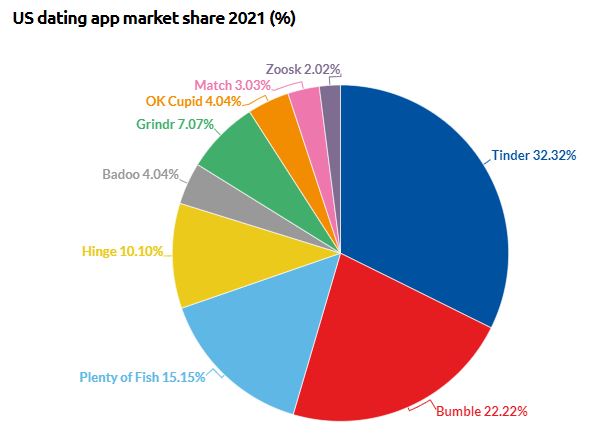
Swipe Right: How Algorithms Help Connect Soulmates
As digital dating continues to evolve, algorithms have become the backbone of how we connect with potential partners. The magic of swiping right or left on dating apps is often celebrated; however, it’s the underlying technology that truly facilitates meaningful connections. Understanding how these algorithms operate can offer valuable insight into finding that special someone.
One of the most fascinating aspects of algorithms in dating apps is their ability to analyze user data. By tapping into the preferences, interests, and behavior of users, these algorithms curate matches that are not random but, rather, strategically tailored to enhance compatibility.
Key functionalities of dating algorithms include:
- User Preferences: Algorithms analyze what users look for in potential partners, such as age, location, interests, and more.
- Behavioral Patterns: By learning from user interactions, like the types of profiles one swipes on, algorithms refine future suggestions.
- Decision-Making Support: Algorithms can suggest compatible matches that one might not discover otherwise, expanding the dating pool.
For example, when Jane joined a popular dating app, she initially focused on appearances. However, after a few successful matches based on mutual hobbies and values, she found deeper connections. Her story highlights how algorithms can create moments of serendipity, unveiling matches that enhance our romantic journeys.
Ultimately, algorithms play an essential role in connecting soulmates, making modern dating less of a gamble and more of a science. They help break down the barriers of traditional match-making by offering personalized and data-driven recommendations, leading to more fulfilling relationships.

Swipe Right: How Algorithms Help Connect Soulmates
Building on our understanding of how algorithms function in dating apps, it’s crucial to recognize their transformative power in connecting individuals who might otherwise remain strangers. At first glance, swiping left or right might seem like a game, but behind that whimsical action lies a sophisticated intelligence designed to foster genuine connections.
The Role of Algorithms in Matchmaking
Algorithms act as modern matchmakers, analyzing vast amounts of user data to identify potential partners. Here’s how they do it:
- Analyzing User Profiles: Each profile provides a wealth of information—from interests and hobbies to relationship goals. Algorithms sift through this data to find commonalities.
- Behavioral Analysis: They continuously track user behavior—what profiles users swipe on, what messages get responses, and even how users interact with the app over time.
- Feedback Loops: Engagement data helps in refining matches further. For instance, if a user frequently interacts with profiles sharing similar interests, the algorithm learns to prioritize those traits.
Real-life Impact
Take Mark, for example. Initially skeptical about online dating, he decided to give it a try. After a few interactions, the app suggested Sarah, someone he would likely have never come across outside of the dating platform. Their shared love for hiking and indie films was highlighted by the algorithm, which ultimately led to a successful relationship.
In this way, algorithms assist individuals in discovering compatible partners, making not just dating easier, but also enriching the overall experience. The process transforms the daunting journey of finding love into a more approachable and enlightening adventure, proving that technology can indeed help connect soulmates.

Understanding Algorithms in Dating Apps
In the digital age, where swipe culture reigns supreme, gaining a deeper understanding of algorithms in dating apps becomes essential. These sophisticated systems are not merely mathematical constructs; they are intricate tools designed to foster connections, making the quest for love both efficient and personalized.
Definition of Algorithms in Dating Apps
At its core, an algorithm is a set of rules or processes that a computer follows to solve a problem or complete a task. In the context of dating apps, algorithms analyze user data to suggest potential matches based on compatibility. They consider various factors such as:
- User Preferences: Age, location, interests, and relationship goals.
- Interaction Patterns: The types of profiles users engage with—what they like, what they ignore.
For instance, if someone frequently swipes right on profiles featuring outdoor activities, the algorithm will prioritize suggesting similar users in the future. This personalized touch can make all the difference in finding that perfect match.
Evolution of Algorithm-based Matching
Over the years, algorithmic matchmaking has witnessed significant evolution. Early dating apps predominantly relied on basic search functionalities, allowing users to filter through profiles with limited criteria. However, as technology advanced, so did the algorithms.
- From Basic to Complex: Initial algorithms were simple, focusing only on demographic factors. Today’s systems incorporate machine learning and AI to predict compatibility effectively.
- Feedback Mechanisms: Modern algorithms are dynamic. They adapt in real time based on user interactions and feedback, continually improving match suggestions.
An example of this evolution can be seen in the transition from platforms like Match.com to apps like Tinder. While Match relied heavily on users filling out detailed questionnaires, Tinder uses fluid algorithms that learn from users’ swiping behaviors, creating a much more engaging experience.
In summary, understanding the algorithms behind dating apps not only demystifies the technology but also highlights the revolutionary shift in how love is discovered in the digital era. As these algorithms become even more refined, the chances of finding meaningful connections continue to increase.

The Science Behind Matching Algorithms
Delving deeper into the mechanics of dating apps, we uncover the fascinating science behind matching algorithms. These algorithms are not just random; they are carefully crafted using psychological principles and data analytics to help users find enduring relationships.
Compatibility Factors Considered
One of the key components of matching algorithms is the compatibility factors they consider. These factors often reflect what researchers have deemed important in successful relationships. Common compatibility indicators include:
- Personality Traits: Many apps integrate personality assessments based on frameworks like the Big Five Personality Traits (openness, conscientiousness, extraversion, agreeableness, and neuroticism).
- Interests and Hobbies: Shared passions, whether for travel, cooking, or fitness, can ignite common ground, making them essential for matchmaking.
- Values and Life Goals: Compatibility in values—such as the importance of family, career ambitions, or lifestyle choices—plays a significant role in long-term success.
For example, Sarah, a passionate environmentalist, found her match through an app that highlighted their mutual interest in sustainability. Such targeted factors help create profound connections from the start.
Behavioral Analysis and Machine Learning
The integration of behavioral analysis and machine learning further refines these algorithms. By analyzing how users interact with the app, dating platforms can continuously optimize their matchmaking processes. Here’s how it works:
- Data Collection: Every swipe, message, and profile view is tracked to build a comprehensive user profile.
- Predictive Modeling: Machine learning models predict user preferences and suggest compatible matches based on past behavior.
- Dynamic Adjustments: Unlike static algorithms, the best systems evolve over time. For instance, if a user begins to show interest in a new type of profile, the algorithm captures this shift and adapts accordingly.
A compelling illustration is Dan’s journey on a dating app. Initially focused solely on physical appearance, he soon discovered he was engaging more with profiles emphasizing creativity and intellectual pursuit. As a result, the algorithm adjusted to suggest matches aligned with these evolving interests, eventually leading him to a fulfilling relationship.
In summary, the sophisticated interplay of compatibility factors and advanced technology not only enhances the chances of meaningful connections but also enriches the overall dating experience, proving that love in the digital age is a science worth exploring.

Popular Dating Apps Utilizing Algorithmic Matchmaking
With the rapid rise of online dating, several apps stand out for their effective use of algorithmic matchmaking. Each platform takes a unique approach to connecting users, leveraging technology to enhance users’ chances of finding love.
Tinder
Tinder revolutionized the dating scene with its simple swipe-right-to-like and swipe-left-to-pass mechanism. What many people may not realize is the underlying algorithm that powers these matches. Tinder employs a combination of geolocation and user preferences to suggest nearby matches. Key aspects include:
- Elo Score: Initially, Tinder used an Elo score system based on user interactions, which determined how attractive someone was perceived based on the quality of their matches.
- Real-time Adaptation: The app continuously learns from users’ behaviors, adjusting suggestions based on swipes and messages, leading to a more tailored experience.
For instance, when Emma started using Tinder, she noticed that profiles that highlighted fun outdoor activities appeared frequently in her matches—reflecting her interests.
eHarmony
In contrast, eHarmony takes a more systematic approach to matchmaking. Known for its focus on long-term relationships, the app uses a comprehensive personality assessment at the start. Factors influencing matches include:
- 130 Compatibility Dimensions: eHarmony’s unique algorithm processes over 130 dimensions to determine compatibility, including emotional support and relationship expectations.
- Scientifically Backed Methodology: The service is built on a solid foundation of psychological research, helping users form deeper connections.
After taking the compatibility test, John found his matches surprisingly aligned with his core values and beliefs, making for more meaningful interactions.
OkCupid
OkCupid blends user-driven data with algorithmic matchmaking by allowing users to answer a wide array of questions that reflect their beliefs and interests. Highlights of its algorithmic approach include:
- Customized Questions: Users respond to prompts covering various topics, from preferences in relationships to lifestyle choices. The algorithm analyzes these responses to suggest compatible matches.
- Match Percentage: OkCupid assigns a match percentage based on how responses align with potential partners, simplifying the selection process.
When Lily joined OkCupid, she was impressed by how well her responses reflected her personality and desires in a match, enabling her to connect genuinely with like-minded individuals.
In summary, whether through swiping or in-depth assessments, these popular dating apps demonstrate the power of algorithmic matchmaking, providing users with diverse pathways to forge meaningful connections. Each platform’s unique approach caters to different relationship goals, showcasing the innovative ways technology can facilitate romance.
Enhancing User Experience through Algorithms
As we dive deeper into the world of dating apps, it’s essential to highlight how algorithms not only help in matchmaking but also enhance the overall user experience. From personalized recommendations to protective measures against deceit, these algorithms are designed with user satisfaction in mind.
Personalized Recommendations
One of the most exciting features of modern dating apps is the ability to offer personalized recommendations. Algorithms analyze user behavior and preferences to create tailored matches. Here’s how it works:
- Data-Driven Insights: Algorithms track interactions, such as swipes and messages, to identify patterns. For example, if a user frequently engages with profiles that highlight a love for jazz music or hiking, the algorithm will prioritize suggesting similar profiles.
- Continuous Adaptation: These algorithms aren’t static. They learn from user activities, meaning recommendations become increasingly accurate over time. As users define their preferences, the algorithm refines its offerings.
For instance, when Mike joined a dating app and indicated his interest in board games and adventure sports, he found that his recommended matches echoed these interests–making it easier for him to connect with partners who shared his hobbies.
Preventing Catfishing and Fake Profiles
Aside from enhancing matchmaking, algorithms also play a critical role in creating a safer environment by preventing catfishing and the proliferation of fake profiles. Here’s how:
- Profile Verification: Many apps now employ algorithms that include verification processes. This can include photo matching or requiring users to verify their identity through social media.
- Anomaly Detection: Algorithms analyze user behaviors that deviate from the norm. For example, if a profile receives an unusually high number of messages in a short period or presents overly polished photos, the algorithm flags it for further review.
For example, when Sam encountered what seemed like a perfect match, the app’s security features alerted him that the profile hadn’t undergone verification. This precaution saved him from a potentially misleading interaction, allowing him to explore genuine connections instead.
In summary, the integration of sophisticated algorithms into dating apps significantly enhances the user experience by providing personalized match suggestions and ensuring safety against deceitful profiles. By combining these two aspects, dating apps strive to create a more enriching and secure space for users to discover meaningful relationships.

Ethical Considerations in Algorithmic Matchmaking
As we explore the innovative tools that dating apps use to enhance user experience, it’s crucial to address the ethical considerations surrounding algorithmic matchmaking. While these technologies have revolutionized the way people find love, they also raise important questions regarding data privacy and fairness.
Data Privacy and Security
In an era where personal data is often a commodity, the protection of user information has never been more critical. Dating apps collect a wealth of personal data, so understanding how this information is managed is vital. Here are key points to consider:
- User Consent: Users should be aware of what data is being collected and how it is used. Many apps include lengthy privacy policies, but they aren’t always user-friendly.
- Data Security: Apps must implement robust security measures to safeguard sensitive information. A breach can lead to devastating consequences, such as identity theft or unwanted harassment.
For instance, when Alex started using a popular dating app, he carefully reviewed the privacy policy and was relieved to find that the app encrypted its users’ data. This gave him peace of mind as he began exploring potential connections.
Bias and Fairness in Algorithm Design
Another pressing concern is the inherent bias in algorithm design. Algorithms can unintentionally reinforce societal prejudices, leading to unfair matchmaking experiences. Important considerations include:
- Inclusivity: Algorithms should reflect diverse perspectives, ensuring that users from various backgrounds can feel represented in the match suggestions.
- Adaptive Learning: As algorithms learn from user interactions, care must be taken to avoid reflecting biased behaviors and attitudes. Developers need to monitor and refine algorithms consistently.
For example, consider a dating app that predominantly shows users profiles based on geographical proximity, potentially overlooking individuals who might be the perfect match regardless of distance. This approach can limit opportunities and create frustration.
In conclusion, while algorithmic matchmaking offers numerous benefits, addressing ethical considerations such as data privacy and algorithmic bias is paramount to fostering trust and ensuring that all users have equitable access to meaningful connections. By emphasizing transparency and fairness, dating apps can create a safer, more inclusive environment for finding love.

Success Stories: Real-life Accounts of Algorithm-Matched Couples
As we delve into the more personal side of dating apps, it’s inspiring to hear success stories from couples who found lasting love through algorithmic matchmaking. These real-life accounts not only highlight the effectiveness of technology but also remind us that genuine connections are possible in the digital age.
Testimonials of Found Love
Many users have shared heartwarming testimonials about their experiences. Take Mia and Jason, for instance. They met on a dating app specifically designed for individuals sharing similar interests and values.
- Mia shared, “I was hesitant at first, but the app matched me with someone who loves adventure as much as I do. We clicked instantly over our shared hiking trips.”
Their story is not unique; countless couples have similar accounts of unexpected matches leading to real connections. Other testimonials reflect that users appreciate personalized recommendations, often finding partners with whom they share not only interests but also life goals.
Long-term Relationship Outcomes
The success of algorithmic matchmaking isn’t solely in first dates; many couples report fulfilling long-term relationships stemming from these initial connections. Research shows that over half of couples who met through dating apps are still together after a year.
- Sam and Lisa, matched through a platform utilizing a detailed personality assessment, recently celebrated their two-year anniversary. Sam emphasizes, “The algorithm got it right—our values aligned perfectly, and we have built a supportive relationship that feels like home.”
These long-term outcomes reflect the power of algorithms in understanding human connections beyond perpetual swiping. By facilitating meaningful interactions and pairing compatible individuals, dating apps open doors to lasting love stories.
In conclusion, the success stories of algorithm-matched couples showcase the potential of technology to bring people together. As the digital landscape continues to evolve, these testimonials remind us that behind every match is a story waiting to unfold.

Future Trends in Algorithmic Dating
As we look ahead, the landscape of dating apps continues to evolve, driven by advancements in technology and changing user expectations. The future of algorithmic dating holds exciting possibilities, particularly in the areas of artificial intelligence (AI) and virtual reality (VR), which promise to enhance user experiences and improve matchmaking capabilities.
AI Advancements in Matchmaking
Artificial intelligence has already changed the game when it comes to online dating, but its potential is far from fully realized. Here are a few ways AI is set to transform matchmaking:
- Deeper Insights: AI can analyze massive datasets to identify patterns that humans might overlook. For instance, it could assess language styles in messaging to gauge compatibility beyond simple interests.
- Predictive Modeling: Enhanced predictive algorithms can provide better recommendations by forecasting future compatibility based on evolving user behavior. Imagine a dating app that evolves with you, learning your preferences as you explore connections.
For example, Rachel shared how her dating app started recommending partners aligned with her aspirations and lifestyle changes. “It felt like the app knew me better than I did,” she recalls, reflecting a more intuitive matchmaking process.
Integrating Virtual Reality for Enhanced Connections
Alongside AI, virtual reality is emerging as a compelling tool in the dating arena, offering immersive experiences that could redefine how people connect. Here’s how:
- Virtual Dates: Imagine going on a virtual reality date where you can engage in activities like a beach walk or a concert—as if you were truly together. This could add an element of fun and spontaneity that traditional video calls can’t replicate.
- Comfort and Familiarity: VR can also create a more comfortable environment, helping users ease nerves during first interactions. A virtual cafe or park can set a delightful scene for conversation without physical pressure.
For instance, when Mark explored a dating app that integrated VR features, he found that virtual dates allowed him to explore chemistry before meeting someone in person.
In conclusion, the future trends in algorithmic dating suggest an exciting evolution powered by AI and VR. These advancements promise to create more meaningful connections, allowing users to navigate the dating world with confidence and creativity. It’s a thrilling time to embrace the possibilities that technology brings to the quest for love, making the journey not just easier but also more enjoyable.
